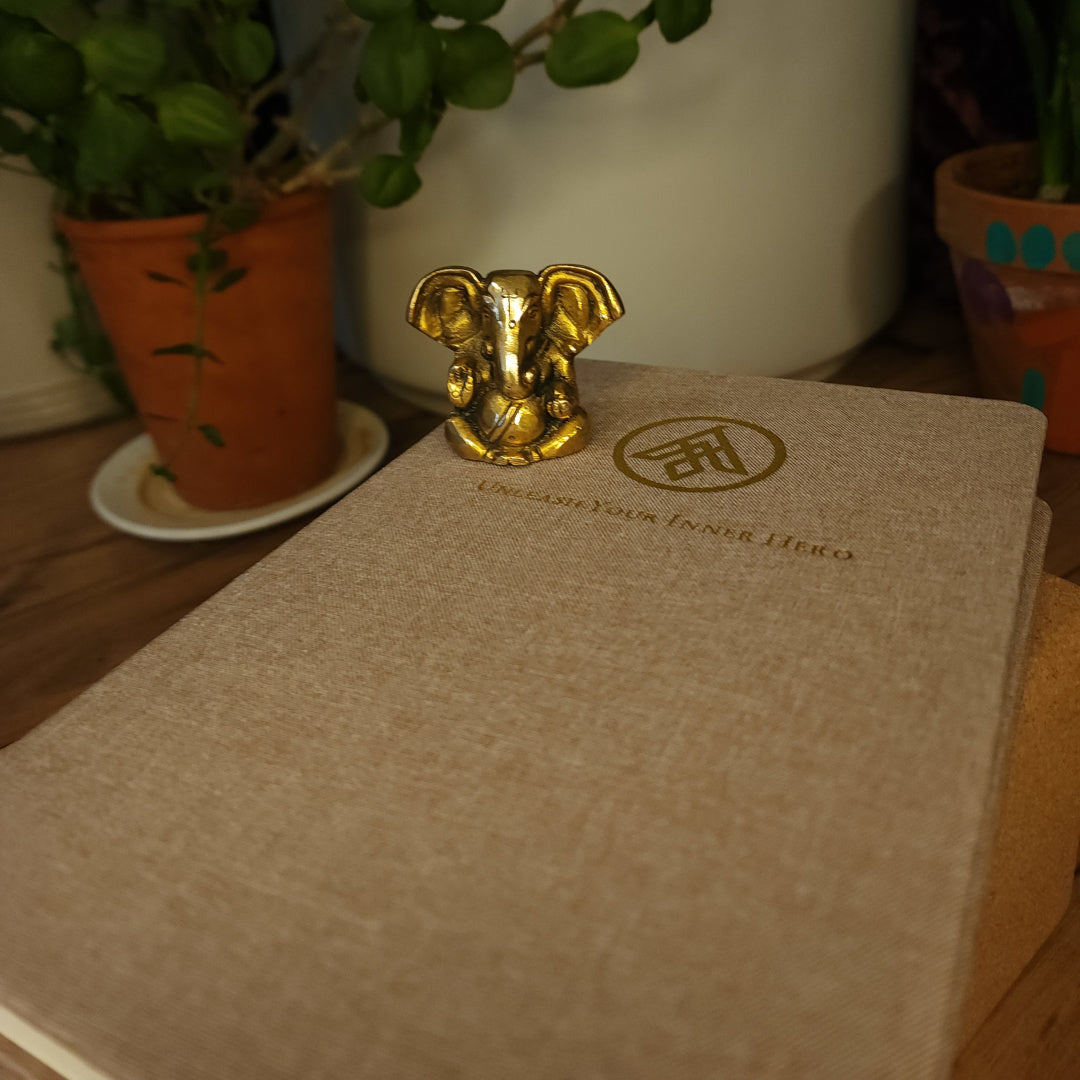Prakrti (Matter)
Jack UtermoehlShare
Prakrti is a Sanskrit term meaning "matter" or "nature." In yoga and Indian philosophy, prakrti represents the fundamental substance of the material world, encompassing all physical, mental, and energetic phenomena.
It is considered the dynamic, creative force responsible for the manifestation of the universe.
In Sankhya philosophy, prakrti is contrasted with purusa (consciousness), and their interplay is seen as the basis for all experience and existence.
Etymology and Meaning
Sanskrit Spelling: प्रकृति
Root Words: "Pra" (before, primary) + "Kri" (to do, to act)
Translation Variations: Matter, nature, primal substance, creative force
Pronunciation: Prakṛti [PRAH-kree-tee]
Prakrti is the dynamic, ever-changing aspect of existence.
It is the source of creation, embodying the material and mental realms through its three fundamental qualities, or gunas: sattva (balance), rajas (activity), and tamas (inertia).
The Three Gunas
Prakrti manifests through three fundamental qualities, which influence all aspects of existence:
Sattva (Balance): Represents clarity, harmony, and equilibrium. It fosters wisdom, purity, and spiritual growth.
Rajas (Activity): Represents dynamism, energy, and movement. It drives action, desire, and change.
Tamas (Inertia): Represents heaviness, darkness, and resistance. It leads to lethargy, ignorance, and stagnation.
These gunas are present in all aspects of prakrti and determine the nature of physical, mental, and emotional states.
Symbolism in Yoga Philosophy
In Sankhya philosophy, prakrti is the primal energy from which all forms arise. It is the counterpart to purusa (pure consciousness), which is unchanging and eternal.
Together, prakrti and purusa create the interplay of the material and spiritual realms, forming the basis of all experiences.
Prakrti represents the dynamic and mutable aspects of existence, while purusa symbolizes the static, observing principle.
Jewelry Designed for Your Practice
We created this collection to honor the wisdom and beauty of yoga. Each piece is crafted with intention to support your journey, on and off the mat.
Prakrti in the Human Experience
In the context of human existence, prakrti encompasses the body, mind, and energy systems. It is expressed through:
Physical Matter: The body and all tangible aspects of the world.
Mental Patterns: Thoughts, emotions, and psychological tendencies.
Energetic Processes: The subtle flows of energy (prana) that sustain life and action.
Understanding prakrti helps practitioners recognize the transient and conditioned nature of their experiences, fostering non-attachment and deeper self-awareness.
Practical Application
In Yoga and Meditation
- Observe the interplay of the gunas in your practice, identifying moments of balance, activity, and inertia.
- Use yoga and meditation to harmonize the gunas, cultivating sattva for clarity and spiritual growth.
In Daily Life
- Recognize the influence of prakrti in your habits, emotions, and relationships, striving for balance.
- Engage in mindful actions that align with your higher values, reducing tamas and excessive rajas.
Quotes and Wisdom
"Prakrti is the dance of creation, ever-changing yet grounded in the eternal."
"To know prakrti is to understand the rhythms of life and align with the flow of existence."
Modern Relevance
Prakrti remains a vital concept for understanding the interconnectedness of body, mind, and environment.
By recognizing the dynamics of prakrti and the gunas, individuals can cultivate balance and harmony in their lives, making conscious choices that align with their well-being and spiritual goals.
Related Concepts
Purusa: Consciousness, the unchanging witness that interacts with prakrti.
Gunas: The three qualities of prakrti, shaping all aspects of existence.
How to Understand and Harmonize Prakrti
Mindset: Approach life with awareness of its transient nature, using this understanding to cultivate balance.
Actions: Engage in practices that elevate sattva, such as meditation, mindfulness, and wholesome living.
Reflection: Regularly observe how the gunas manifest in your thoughts, actions, and environment, making adjustments as needed.
Suggested Reading
- The Yoga Sutras of Patanjali
- Samkhya Karika
- The Upanishads
Conclusion
Prakrti represents the dynamic, creative force of nature and matter, shaping all aspects of existence through its interplay with purusa.
By understanding prakrti and the gunas, practitioners can navigate life with greater awareness, harmony, and alignment with their spiritual path.







